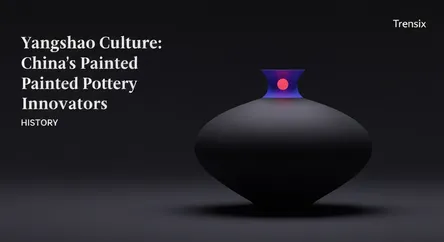History
Yangshao Culture: China's Painted Pottery Innovators

Discover the Yangshao culture (5000-3000 BC), a Neolithic civilization in China's Yellow River valley known for its painted pottery and early farming.
What is it?
The Yangshao culture was a Neolithic civilization that flourished along the middle reaches of the Yellow River in China from approximately 5000 to 3000 BC. Named after the first excavated site discovered in 1921, this culture is one of the earliest settled agricultural societies in China. The Yangshao people were farmers who primarily cultivated millet, supplemented by hunting and fishing. They domesticated animals like pigs and dogs. A defining characteristic of the Yangshao culture is its distinctive painted pottery. Artisans created fine red and black earthenware, decorated with geometric patterns, and sometimes human and animal motifs, without the use of a potter's wheel.
Why is it trending?
The Yangshao culture is foundational to understanding the origins of Chinese civilization. Its discovery in 1921 marked the birth of modern Chinese archaeology, providing a crucial window into the country's prehistoric past. It represents a key transition from nomadic hunting and gathering to settled agricultural life in the region. The widespread presence of hundreds of Yangshao sites demonstrates significant interregional interaction and cultural expansion during the Neolithic period. Ongoing archaeological research continues to reveal the complexity of their society, including their village structures, burial practices, and early forms of social organization, solidifying its importance in world history.
How does it affect people?
The innovations of the Yangshao culture had a lasting impact on subsequent civilizations in China. Their development of settled agriculture, centered on millet farming, established a stable food source that allowed for the growth of permanent villages and larger populations. This shift laid the groundwork for more complex social structures to emerge. Their advanced pottery techniques and artistic expressions were influential, with their ceramic styles spreading to neighboring regions. The legacy of the Yangshao is seen as a vital stream in the pluralistic and unified development of the Chinese nation and its cultural identity.